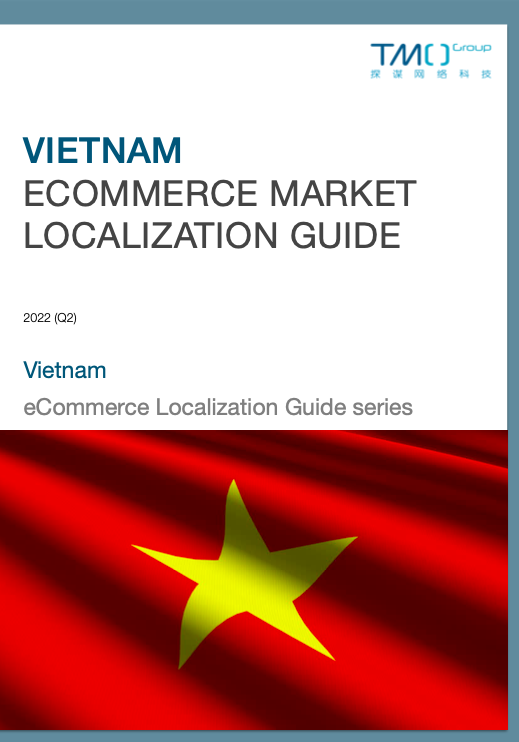Vietnam is one of a number of Southeast Asian nations being eyed up by potential investors and eCommerce businesses looking for exciting markets to enter. While Vietnam doesn't boast Indonesia's massive population or Singapore's highly developed infrastructure, it nonetheless presents a range of interesting opportunities for potential investors and market entrants in the eCommerce sphere. But is the Vietnamese eCommerce fruit ready for the picking, or should overseas entities leave it to ripen on the vine a little while longer?
Market Potential
Vietnam has fairly open laws about foreign direct investment, with no limits on this in the eCommerce sphere, as it is at a stage where it wants to encourage foreign companies to bring their business to Vietnam. This is combined with increasing infrastructure spending and
It has been predicted that Vietnam's development will accelerate to the point that it is the world's fastest developing among all emerging economies by 2025, the same year it is expected to reach a nominal GDP of 436 billion USD.
While Internet penetration is around 73%, the smartphone penetration rate is 98% and so it is expected that more people will naturally use the Internet on their existing smartphones as costs go down. Though approximately 51.78 million people use eCommerce in Vietnam, or around half the population, online retail made up 8.7% of total retail in 2021. This is indeed showing promising growth rates - stats from 2018 show a 15.6% growth over the previous year, with a total revenue of 2.259 billion USD, a figure that is expected to almost double by 2023.
As such, though still just a fraction of total retail, eCommerce is a fast-growing market which is primed to continue expanding quickly due to respectable degrees of tech adoption and consumer electronics penetration.
Vietnamese Consumers
Vietnam has a population of around 100 million, with a little more than 30% of the population living in the country's expanding urban areas, and around 15 million people living in the two largest cities, Ho Chi Minh City and capital Hanoi. While much of the population has historically lived in deep poverty, reforms in the 80s and heavy government investment in education, healthcare, and areas particularly affected by poverty (such as remote rural regions) has lifted a significant portion of Vietnamese people out of poverty. Poverty rates are now below those of China, India, and the neighboring Philippines, while careful economic policies have prevented a wide wealth gap from emerging as it has in those countries. The country's middle class is now the fastest growing of any ASEAN country, making for a large and growing consumer base.
Consumers in Vietnam are generally considered highly price-sensitive, and still fairly wary both of payment methods besides cash and of traditional online purchasing models that doesn't let them get their eyes and hands on a product until delivery. This wariness has fed into a strong preference in Vietnam for Cash On Delivery (COD) payments, though eWallets are seeing a fair amount of investment and growth and so could finally unseat COD in the coming decade. Equally, new buying models such as online-to-offline (O2O) capitalize on the large price-sensitive but online-wary consumer base, by allowing them to get their hands on a product during the buying process rather than only after delivery.
Unlike many of their neighbors, Vietnamese consumers are not particularly nationalistic when it comes to product preference. Though there is a base-level distrust of many Chinese products that are seen as cheap unreliable goods (with the notable exception of Chinese electronics, a growing presence in Vietnam), most other nations enjoy a fairly prejudice-free market in Vietnam and many are considered high quality merely off the back of their country's reputation. As such, this makes Vietnam a prime market for cross-border sellers and for overseas brands looking to launch their products there.
Vietnam Today
At present, Vietnam appears to be at a turning point in its development. It already has a large, tech-savvy and capable population with an interest in competitive pricing and bargain-hunting, who are already adept at 'web-rooming' (ie researching online before buying offline) and so for whom O2O eCommerce is the next logical step. Paired with this, it has a lot of initial interest from overseas companies wishing to get into the market early and establish themselves before the rest of the world catches on to Vietnam's rapidly accelerating development. Also, while homegrown companies are numerous and driven to seize the opportunities their homeland is increasingly presenting, many of these suffer from less experience, technical expertise, and proven internal efficiency, especially when compared to established foreign brands - who are also perceived more kindly by the local population.
All these mean that at the moment, Vietnam is a market that presents a mix of challenges and opportunities. Companies entering the country wanting to gain the obvious advantages of an earlier start will have to contend with still-developing (if fairly fast) infrastructures and ecosystems, and will have to keep a close eye on the developments of a market that remains some years away from maturity and a consumer base that has not yet settled into the patterns expected from a more developed market. However, the rewards for successfully navigating this key moment of opportunity would seem to be considerable indeed.
To address these areas and more in greater detail, TMO Group put together the Vietnam eCommerce Market GuideThis in-depth primer aims to be your one-stop guide to the Vietnamese eCommerce market, including how to take your business there and succeed.Vietnam eCommerce Market Localization Guide, which comprehensively deconstructs Vietnam's cross-border eCommerce ecosystem and elaborates in-depth on the multiple key dimensions involved in the Vietnamese eCommerce sphere, such as entry strategies, eCommerce structure, warehousing and logistics, payment options, sales channels, legal framework, consumer insights, marketing and social media strategies, customs and taxation, and the most recent trends in all these areas. This guide – updated periodically – was made with the intention of helping you and your business enter and flourish in the Vietnamese eCommerce market. There is also a Vietnam eCommerce Market Starter GuideA free primer on Vietnam as an eCommerce market: statistics, market analysis, trends; market entry strategies.free Starter version for those not yet ready to commit financially to exploring an Vietnamese eCommerce entry strategy.
If you’re interested to know more about the Vietnamese eCommerce market, check out our Vietnam eCommerce Market Localization Guide or contact TMO Group’s Vietnam eCommerce experts directly!















